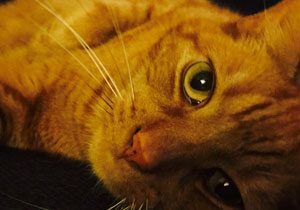
Birds of the UK and Ireland Primary Resource
Meet the brilliant birds that soar through our skies…
This primary resource introduces children to different species of birds found in the UK and Ireland. Read fascinating information about common birds, and meet three species whose numbers are in decline as a result of human activity. Where do puffins make their nests? Which is the only species of bird endemic to the UK? Why do woodpeckers hammer on trees? Which beautiful bird is on the brink of extinction?
Using this resource sheet, pupils will discover interesting facts, images and information about four birds – the puffin, peregrine falcon, crossbill and great spotted woodpecker. They will also gain an understanding of the dangers birds face, with examples of three endangered birds – the white tailed eagle, corn bunting and turtle dove.
This teaching resource can be used in study group tasks for investigating different species of birds in the UK and Ireland, as well as bird conservation. It can be used as a printed handout for each pupil to review and annotate, or for display on the interactive whiteboard using the images included in the resource for class discussion.
Activity: Ask the children to carry out research on local birds and then see what different species they can spot in the school grounds or in their garden. They could then draw a poster of their favourite species and include facts and information from their research. Where can the bird be spotted? Where does it make its nest? What food does the bird eat? How fast can it fly?
N.B. The following information for mapping the resource documents to the school curriculum is specifically tailored to the English National Curriculum and Scottish Curriculum for Excellence.
This Animals primary resource assists with teaching the following Key Stage 1 Science (Year 1) objectives from the National Curriculum:
Pupils should be taught to:
- – identify and name a variety of common animals including fish, amphibians, reptiles, birds and mammals
- – identify and name a variety of common animals that are carnivores, herbivores and omnivores
- – describe and compare the structure of a variety of common animals (fish, amphibians, reptiles, birds and mammals, including pets)
Pupils might work scientifically by: using their observations to compare and contrast animals at first hand or through videos and photographs, describing how they identify and group them; grouping animals according to what they eat; and using their senses to compare different textures, sounds and smells.
National Curriculum Key Stage 1 Science (Year 2) objective:
Pupils should be taught to:
- – identify that most living things live in habitats to which they are suited and describe how different habitats provide for the basic needs of different kinds of animals and plants, and how they depend on each other
- – identify and name a variety of plants and animals in their habitats, including micro- habitats
- – describe how animals obtain their food from plants and other animals, using the idea of a simple food chain, and identify and name different sources of food.
Pupils should be introduced to the idea that all living things have certain characteristics that are essential for keeping them alive and healthy. They should raise and answer questions that help them to become familiar with the life processes that are common to all living things. Pupils should be introduced to the terms ‘habitat’ (a natural environment or home of a variety of plants and animals) and ‘micro-habitat’ (a very small habitat, for example for woodlice under stones, logs or leaf litter).
Pupils should compare animals in familiar habitats with animals found in less familiar habitats, for example, on the seashore, in woodland, in the ocean, in the rainforest.
Pupils should be taught to:
- – notice that animals, including humans, have offspring which grow into adults
- – find out about and describe the basic needs of animals, including humans, for survival (water, food and air)
Pupils should be introduced to the basic needs of animals for survival, as well as the importance of exercise and nutrition for humans. They should also be introduced to the processes of reproduction and growth in animals. The focus at this stage should be on questions that help pupils to recognise growth; they should not be expected to understand how reproduction occurs.
National Curriculum Lower Key Stage 2 Science (Year 3) objective:
Pupils should be taught to:
- – identify that animals, including humans, need the right types and amount of nutrition, and that they cannot make their own food; they get nutrition from what they eat
- – compare and contrast the diets of different animals (including their pets) and decide ways of grouping them according to what they eat. They might research different food groups and how they keep us healthy and design meals based on what they find out.
- – record findings using simple scientific language, drawings, labelled diagrams, keys, bar charts and tables
National Curriculum Lower Key Stage 2 Science (Year 4) objective:
Pupils should be taught to:
- – recognise that living things can be grouped in a variety of ways
- – explore and use classification keys to help group, identify and name a variety of living things in their local and wider environment
- – recognise that environments can change and that this can sometimes pose dangers to living things.
- – construct and interpret a variety of food chains, identifying producers, predators and prey
National Curriculum Upper Key Stage 2 Science (Year 5) objective:
Pupils should be taught to:
- – describe the differences in the life cycles of a mammal, an amphibian, an insect and a bird
This Animals primary resource assists with teaching the following Sciences Early level objectives from the Scottish Curriculum for Excellence:
- – I have observed living things in the environment over time and am becoming aware of how they depend on each other
Scottish Curriculum for Excellence First level Sciences objectives:
- – I can explore examples of food chains and show an appreciation of how animals and plants depend on each other for food.
- – I can distinguish between living and non living things. I can sort living things into groups and explain my decisions.
Scottish Curriculum for Excellence Second level Sciences objectives:
- – I can identify and classify examples of living things, past and present, to help me appreciate their diversity. I can relate physical and behavioural characteristics to their survival or extinction.
- – I can use my knowledge of the interactions and energy flow between plants and animals in ecosystems, food chains and webs. I have contributed to the design or conservation of a wildlife area.
Scottish Curriculum for Excellence Third level Sciences objectives:
- – I can sample and identify living things from different habitats to compare their biodiversity and can suggest reasons for their distribution.
Scottish Curriculum for Excellence Fourth level Sciences objectives:
- – I understand how animal and plant species depend on each other and how living things are adapted for survival. I can predict the impact of population growth and natural hazards on biodiversity.
Download primary resource
Note: This is a subscriber-only benefit. If you have an active subscription, please log into your online account to download the files.
More Like

Country Fact File: Tanzania!

Cats memory game!

Science with Dr Karl: A wee fact about asparagus!










LEAVE A COMMENT
THANK YOU
Your comment will be checked and approved shortly.
WELL DONE,
YOUR COMMENT
HAS BEEN ADDED!
COMMENTS1
CUSTOMIZE YOUR AVATAR